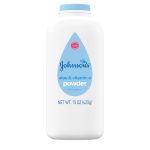
Johnson’s Baby Powder with Naturally Review powder Buying Guide – Oemiu
Johnson’s Baby Powder with Naturally Derived Powder: A Comprehensive Buying Guide
For generations, the scent of baby powder has been synonymous with cleanliness, comfort, and the tender care of infants. Johnson’s Baby Powder, a household name, has long been a staple in nurseries and bathrooms around the world. However, evolving health concerns and a greater emphasis on natural ingredients have prompted Johnson & Johnson to innovate and offer a new version: Johnson’s Baby Powder with Naturally Derived Powder. This guide delves deep into this product, exploring its ingredients, benefits, safety, usage, and comparing it to traditional formulations and other baby powder options. We’ll equip you with the knowledge needed to make an informed decision about whether this powder is the right choice for your baby or for yourself.
Understanding Johnson’s Baby Powder with Naturally Derived Powder
The shift towards naturally derived ingredients is a significant trend across the personal care industry, driven by consumer demand for products that are both effective and perceived as safer and gentler. Johnson’s Baby Powder with Naturally Derived Powder reflects this trend, aiming to provide the same absorbent and comforting properties as the original while addressing concerns about talc. This new formulation uses cornstarch as its primary ingredient, a substance widely recognized for its ability to absorb moisture and reduce friction. But what exactly does “naturally derived” mean in this context, and how does this new formulation stack up against its predecessor and other alternatives? The change in the base ingredient from talc to cornstarch is not merely a cosmetic alteration; it represents a fundamental shift in the product’s composition, potentially impacting its performance, safety profile, and overall suitability for different users. Many parents prefer a product that is free from harsh chemicals and synthetic fragrances, and the naturally derived baby powder caters to this preference by offering a simpler, more transparent ingredient list. It’s also worth considering how this type of baby powder may influence babies’ skin sensitivity. Therefore, the ingredients and safety tests are crucial when determining if this product is right for your child.
The term “naturally derived” can sometimes be misleading, as it doesn’t necessarily equate to “all-natural” or “organic.” It generally indicates that the ingredient originates from a natural source, such as plants or minerals, but may undergo some processing to make it suitable for use in the final product. In the case of Johnson’s Baby Powder with Naturally Derived Powder, the cornstarch is derived from corn kernels, and the product may contain other ingredients, such as fragrance, that might not be considered strictly natural. Understanding the full ingredient list is therefore essential for making an informed choice. A deeper investigation into the sourcing and processing of the cornstarch used in this powder can also provide valuable insights into its overall sustainability and environmental impact. This includes examining whether the corn is genetically modified (GMO) and whether the manufacturing process adheres to environmentally responsible practices. While some consumers may prioritize natural ingredients above all else, others may be more concerned with performance, price, or other factors. Weighing these different considerations is crucial when evaluating whether this naturally derived baby powder aligns with your personal values and needs.
A Closer Look at the Ingredients
The ingredient list of Johnson’s Baby Powder with Naturally Derived Powder is typically shorter and simpler than that of the original talc-based version. The primary ingredient, of course, is cornstarch. Cornstarch is known for its ability to absorb excess moisture, which is essential in preventing diaper rash and keeping skin dry and comfortable. Beyond cornstarch, other common ingredients include tricalcium phosphate, which acts as an anti-caking agent to prevent the powder from clumping, and fragrance. The fragrance is intended to provide a pleasant and familiar scent, reminiscent of traditional baby powder. However, it’s important to note that fragrances can sometimes be a source of irritation for sensitive skin, particularly in infants. Therefore, parents who are concerned about potential sensitivities may want to look for fragrance-free alternatives or test the powder on a small area of skin before applying it more broadly. Some formulations may also include aloe vera or vitamin E, which are added for their skin-soothing and moisturizing properties. Examining the specific function of each ingredient allows consumers to understand the purpose of the powder and make informed decisions when buying talc-free baby powder.
Comparing the ingredient list of Johnson’s Baby Powder with Naturally Derived Powder to that of the original talc-based version reveals a clear difference in the primary ingredient. Talc is a mineral composed of magnesium, silicon, and oxygen, and it has been used in baby powder for decades due to its softness and absorbent properties. However, concerns about potential contamination with asbestos, a known carcinogen, have led to increased scrutiny of talc-based products. This concern has prompted manufacturers like Johnson & Johnson to explore alternative formulations, such as the cornstarch-based powder. The shift from talc to cornstarch represents a significant change in the product’s composition and reflects a growing awareness of potential health risks associated with talc. It also highlights the importance of ongoing research and testing to ensure the safety and efficacy of personal care products. While cornstarch is generally considered safe, it’s important to note that it can sometimes promote the growth of yeast or bacteria in moist environments. Therefore, proper hygiene and regular diaper changes are essential when using cornstarch-based baby powder. If your child suffers from diaper rash, it’s crucial to determine the underlying cause and seek advice from a healthcare professional before continuing to use any baby powder.
Benefits of Using Johnson’s Baby Powder with Naturally Derived Powder
The primary benefit of Johnson’s Baby Powder with Naturally Derived Powder, like any baby powder, is its ability to absorb excess moisture and reduce friction. This helps to keep the skin dry and comfortable, preventing diaper rash and other skin irritations. By creating a barrier between the skin and irritants like urine and feces, the powder helps to protect the delicate skin of infants. This is particularly important in the diaper area, which is prone to moisture buildup and chafing. In addition to preventing diaper rash, baby powder can also be used to soothe irritated skin in other areas of the body, such as under the arms or in skin folds. The absorbent properties of cornstarch can help to reduce sweating and prevent the growth of bacteria that can contribute to body odor. Many parents also use baby powder to freshen up their baby’s skin after a bath or during diaper changes. The light, clean scent of baby powder can leave the baby feeling and smelling fresh and clean. When applying powder, it is important to do so carefully and avoid inhaling the powder, as this can irritate the lungs.
Another benefit of Johnson’s Baby Powder with Naturally Derived Powder is its perception as a safer and more natural alternative to talc-based powders. The concerns surrounding talc and its potential contamination with asbestos have led many parents to seek out talc-free options. Cornstarch, as a naturally derived ingredient, is generally considered to be a safer alternative, although it is not without its own potential drawbacks. Some parents may also appreciate the fact that Johnson’s Baby Powder with Naturally Derived Powder is often formulated without harsh chemicals or synthetic fragrances. This can be particularly important for babies with sensitive skin or allergies. The simpler ingredient list can provide peace of mind for parents who are concerned about exposing their babies to potentially harmful substances. Furthermore, the move towards naturally derived ingredients aligns with a broader trend towards sustainability and environmental consciousness. By choosing a cornstarch-based powder, parents may feel that they are making a more environmentally responsible choice. However, it is important to consider the sourcing and processing of the cornstarch to ensure that it is truly sustainable. Organic baby powder provides a good alternative for eco-conscious parents.
Versatile Uses Beyond Baby Care
While primarily marketed for baby care, Johnson’s Baby Powder with Naturally Derived Powder can also be used for a variety of other purposes. Its absorbent properties make it a useful tool for athletes and active individuals. Sprinkling powder on your feet before putting on socks can help to absorb sweat and prevent blisters. It can also be used to reduce friction between clothing and skin during physical activity. Some people use baby powder as a dry shampoo to absorb excess oil from their hair. Simply sprinkle a small amount of powder on your roots and brush it through to absorb oil and add volume. Baby powder can also be used to set makeup and reduce shine. Applying a light dusting of powder after applying foundation can help to create a matte finish and keep your makeup in place. In addition, baby powder can be used to freshen up linens and clothing. Sprinkling a small amount of powder between your sheets or in your drawers can help to absorb moisture and leave a pleasant scent. Just be sure to test on a small, inconspicuous area first to avoid staining.
Another surprising use for Johnson’s Baby Powder with Naturally Derived Powder is in gardening. It can be used to protect plants from pests and diseases. Dusting the leaves of plants with powder can help to deter insects and prevent fungal growth. Baby powder can also be used to help seeds germinate. Coating seeds with a thin layer of powder before planting can help to absorb moisture and prevent them from rotting. Furthermore, baby powder can be used to loosen tangled jewelry. Sprinkling powder on tangled necklaces or bracelets can help to lubricate the knots and make them easier to untangle. The fine particles of the powder can help to separate the strands and prevent them from snagging. This versatile powder can be a useful addition to any household, offering a range of benefits beyond its primary use in baby care. A good alternative to name brand products is simply labelled “cornstarch baby powder”.
Safety Considerations and Proper Usage
While Johnson’s Baby Powder with Naturally Derived Powder is generally considered safe for use on babies, it is important to follow certain safety precautions. The most important consideration is to avoid inhaling the powder. Inhaling baby powder can irritate the lungs and cause respiratory problems, particularly in infants. To avoid inhalation, apply the powder carefully and away from the baby’s face. Shake the powder into your hand and then apply it to the baby’s skin, rather than shaking it directly onto the baby. It is also important to avoid applying powder to broken or irritated skin. This can increase the risk of infection and slow down the healing process. If your baby has a rash or other skin condition, consult with a doctor before using baby powder. Additionally, ensure that the powder is stored out of reach of children. Ingesting baby powder can be harmful and can cause gastrointestinal problems. The risk of aspiration is also there if a child inhales the powder.
When using Johnson’s Baby Powder with Naturally Derived Powder, it is important to apply it sparingly. A little powder goes a long way, and using too much can actually trap moisture and create a breeding ground for bacteria. Apply a thin layer of powder to clean, dry skin after bathing or diaper changes. Focus on areas that are prone to moisture buildup, such as the diaper area, under the arms, and in skin folds. Avoid applying powder directly to the genitals, as this can increase the risk of irritation. If you are using baby powder to prevent diaper rash, be sure to change diapers frequently and keep the diaper area clean and dry. If your baby develops a rash, stop using the powder and consult with a doctor. Some babies may be sensitive to cornstarch or other ingredients in the powder. If you notice any signs of irritation, such as redness, itching, or swelling, discontinue use and consult with a healthcare professional. It’s crucial to monitor your baby’s skin for any adverse reactions and to seek medical advice if you have any concerns. An alternative approach that many parents consider is fragrance free baby powder.
Comparing Johnson’s Baby Powder Options and Alternatives
Johnson & Johnson offers a variety of baby powder options, including the original talc-based powder (though its availability has been limited due to legal concerns) and the cornstarch-based powder. The key difference between these options is the primary ingredient. As discussed earlier, talc has been associated with potential health risks, while cornstarch is generally considered to be a safer alternative. However, cornstarch can also promote the growth of yeast or bacteria in moist environments, so proper hygiene is essential. In addition to Johnson & Johnson’s offerings, there are many other baby powder brands and formulations available on the market. Some brands offer powders made from other natural ingredients, such as tapioca starch or arrowroot powder. These alternatives may be a good option for parents who are looking for a powder that is free from both talc and cornstarch. It’s important to research the ingredients and potential benefits and drawbacks of each option before making a decision. Look for powders that are fragrance-free, hypoallergenic, and dermatologist-tested to minimize the risk of irritation. Parents should also consult with their pediatrician to determine the best baby powder for their child’s specific needs.
Beyond traditional baby powders, there are also other alternatives for keeping your baby’s skin dry and comfortable. Diaper creams and ointments can provide a protective barrier against moisture and irritants. These products are often formulated with ingredients like zinc oxide or petroleum jelly, which help to soothe and protect the skin. Some parents also find that simply using a clean, dry cloth to pat the baby’s skin dry after diaper changes is sufficient. Proper hygiene and frequent diaper changes are the most important factors in preventing diaper rash and other skin irritations. If you are considering using an alternative to baby powder, be sure to consult with your doctor to determine the best option for your baby’s skin. Ultimately, the choice of whether to use baby powder or an alternative is a personal one. Weigh the potential benefits and risks of each option and consider your baby’s individual needs and sensitivities. Consider a test patch on a small area of the baby’s skin before applying it to the entire body.
| Feature | Johnson’s Baby Powder with Naturally Derived Powder | Traditional Talc-Based Baby Powder (Limited Availability) | Alternative Cornstarch-Based Powder (Brand X) |
|---|---|---|---|
| Main Ingredient | Cornstarch | Talc | Cornstarch |
| Other Ingredients | Tricalcium Phosphate, Fragrance (may vary) | Talc, Fragrance | Cornstarch, Aloe Vera, Tapioca Starch, Fragrance Free |
| Safety Concerns | Potential for yeast/bacteria growth in moist environments; inhalation hazard | Potential asbestos contamination; inhalation hazard | Potential for yeast/bacteria growth in moist environments; inhalation hazard |
| Absorbency | Good | Excellent | Good |
| Fragrance | Typically scented | Typically scented | Often fragrance-free or lightly scented with natural oils |
Frequently Asked Questions
Is Johnson’s Baby Powder with Naturally Derived Powder safe for newborns?
Yes, Johnson’s Baby Powder with Naturally Derived Powder is generally considered safe for newborns, provided that it is used correctly and with caution. The primary ingredient, cornstarch, is a naturally derived substance that is widely used in baby products. However, it’s essential to avoid inhaling the powder, as this can irritate the lungs and cause respiratory problems in infants. When applying the powder, shake a small amount into your hand and then gently apply it to the baby’s skin, away from their face. Also, avoid applying the powder to broken or irritated skin, as this can increase the risk of infection. Some newborns may have sensitive skin, so it’s always a good idea to test the powder on a small area of skin before applying it more broadly. If you notice any signs of irritation, such as redness, itching, or swelling, discontinue use and consult with a healthcare professional. Proper hygiene and frequent diaper changes are crucial, even when using baby powder. If you have any concerns about using baby powder on your newborn, consult with your pediatrician for personalized advice.
How does Johnson’s Baby Powder with Naturally Derived Powder compare to the talc-based version?
The main difference between Johnson’s Baby Powder with Naturally Derived Powder and the talc-based version lies in the primary ingredient: cornstarch versus talc. Talc, a mineral, has been used in baby powder for decades due to its absorbent properties. However, concerns about potential contamination with asbestos, a known carcinogen, have led to increased scrutiny of talc-based products and subsequent legal concerns. Cornstarch is a naturally derived alternative that is generally considered to be safer. While both powders are designed to absorb moisture and reduce friction, cornstarch may not be as absorbent as talc. This means that you may need to apply it more frequently to achieve the same level of dryness. However, the safety concerns associated with talc have made cornstarch-based powders a popular choice for parents who are looking for a safer alternative. The scent of the two versions may also differ slightly, depending on the specific formulation. It is also important to consider that cornstarch based powders may cause yeast infections.
Can I use Johnson’s Baby Powder with Naturally Derived Powder on my face?
While Johnson’s Baby Powder with Naturally Derived Powder is primarily marketed for use on babies, some adults also use it on their face as a setting powder or to absorb excess oil. If you choose to use it on your face, it’s important to apply it sparingly and avoid inhaling the powder. Use a large, fluffy brush to apply a light dusting of powder to areas that tend to get oily, such as the T-zone. Avoid applying the powder too close to your eyes, as this can cause irritation. It’s also important to note that baby powder may not be the best option for all skin types. If you have dry skin, it may be too drying and can accentuate fine lines and wrinkles. If you have sensitive skin, the fragrance in the powder may cause irritation. Before applying it to your entire face, test it on a small area of skin to see how your skin reacts. If you experience any irritation, discontinue use. There are many other setting powders and oil-absorbing products specifically designed for use on the face, which may be a better option for some individuals. Baby powder may clog pores on some individuals.
What are the signs of an allergic reaction to Johnson’s Baby Powder with Naturally Derived Powder?
While allergic reactions to Johnson’s Baby Powder with Naturally Derived Powder are relatively rare, they can occur. The most common signs of an allergic reaction include redness, itching, swelling, and a rash on the skin. These symptoms may appear shortly after applying the powder or may develop over time with repeated use. In some cases, an allergic reaction can also cause respiratory symptoms, such as coughing, wheezing, or difficulty breathing. If you notice any of these symptoms after using the powder, discontinue use immediately and consult with a healthcare professional. It’s important to note that not all skin irritations are caused by allergies. Sometimes, skin irritation can be caused by other factors, such as friction, moisture, or heat. However, if you are concerned about a possible allergic reaction, it’s always best to seek medical advice. A dermatologist or allergist can perform tests to determine if you are allergic to any of the ingredients in the powder and recommend appropriate treatment options. It’s important to keep a detailed record of your symptoms and when they occur to help your doctor make an accurate diagnosis.
Is it safe to use Johnson’s Baby Powder with Naturally Derived Powder in the genital area?
While some people use Johnson’s Baby Powder with Naturally Derived Powder in the genital area to absorb moisture and reduce friction, it’s important to exercise caution and consider potential risks. For babies, it is generally recommended to avoid applying powder directly to the genitals, as this can increase the risk of irritation. For women, using baby powder in the genital area has been linked to an increased risk of ovarian cancer in some studies, although the evidence is not conclusive. If you choose to use baby powder in the genital area, apply it sparingly and avoid inhaling the powder. It’s also important to keep the area clean and dry and to consult with your doctor if you have any concerns. There are alternative products specifically designed for feminine hygiene, such as powders, wipes, and washes, which may be a safer option. Ultimately, the decision of whether to use baby powder in the genital area is a personal one. Weigh the potential benefits and risks and consult with your doctor to determine the best option for you. Some doctors will advise against using this baby powder due to risks of infection.
How should I store Johnson’s Baby Powder with Naturally Derived Powder?
Proper storage of Johnson’s Baby Powder with Naturally Derived Powder is essential to maintain its quality and prevent contamination. The powder should be stored in a cool, dry place away from direct sunlight and moisture. Moisture can cause the powder to clump and become less effective. It’s also important to keep the powder in its original container with the lid tightly closed to prevent contamination from dust, dirt, or other particles. Avoid storing the powder in a humid environment, such as a bathroom, as this can promote the growth of mold or bacteria. If you notice any changes in the appearance, texture, or smell of the powder, discard it immediately. Keep the powder out of reach of children to prevent accidental ingestion or inhalation. A high shelf in a cupboard or closet is ideal, where it is inaccessible to little hands. By following these simple storage guidelines, you can ensure that your Johnson’s Baby Powder with Naturally Derived Powder remains safe and effective for use.
Can Johnson’s Baby Powder with Naturally Derived Powder be used for adults?
Yes, Johnson’s Baby Powder with Naturally Derived Powder can be used by adults for various purposes, similar to its use for babies. Adults often use it to absorb excess moisture, reduce friction, and freshen up the skin. Common applications include using it as a dry shampoo to absorb oil in the hair, as a setting powder for makeup, to prevent chafing during physical activity, or to keep feet dry and prevent blisters. When using it, adults should follow the same precautions as when using it on babies: avoid inhaling the powder, apply it sparingly to clean, dry skin, and discontinue use if any irritation occurs. Adults with sensitive skin should also test the powder on a small area of skin before applying it more broadly to ensure they don’t experience any adverse reactions. While baby powder is generally safe for adults, there are other products specifically formulated for adult use that might offer better results or be more suitable for certain skin types. Ultimately, the decision to use Johnson’s Baby Powder with Naturally Derived Powder as an adult is a personal preference.
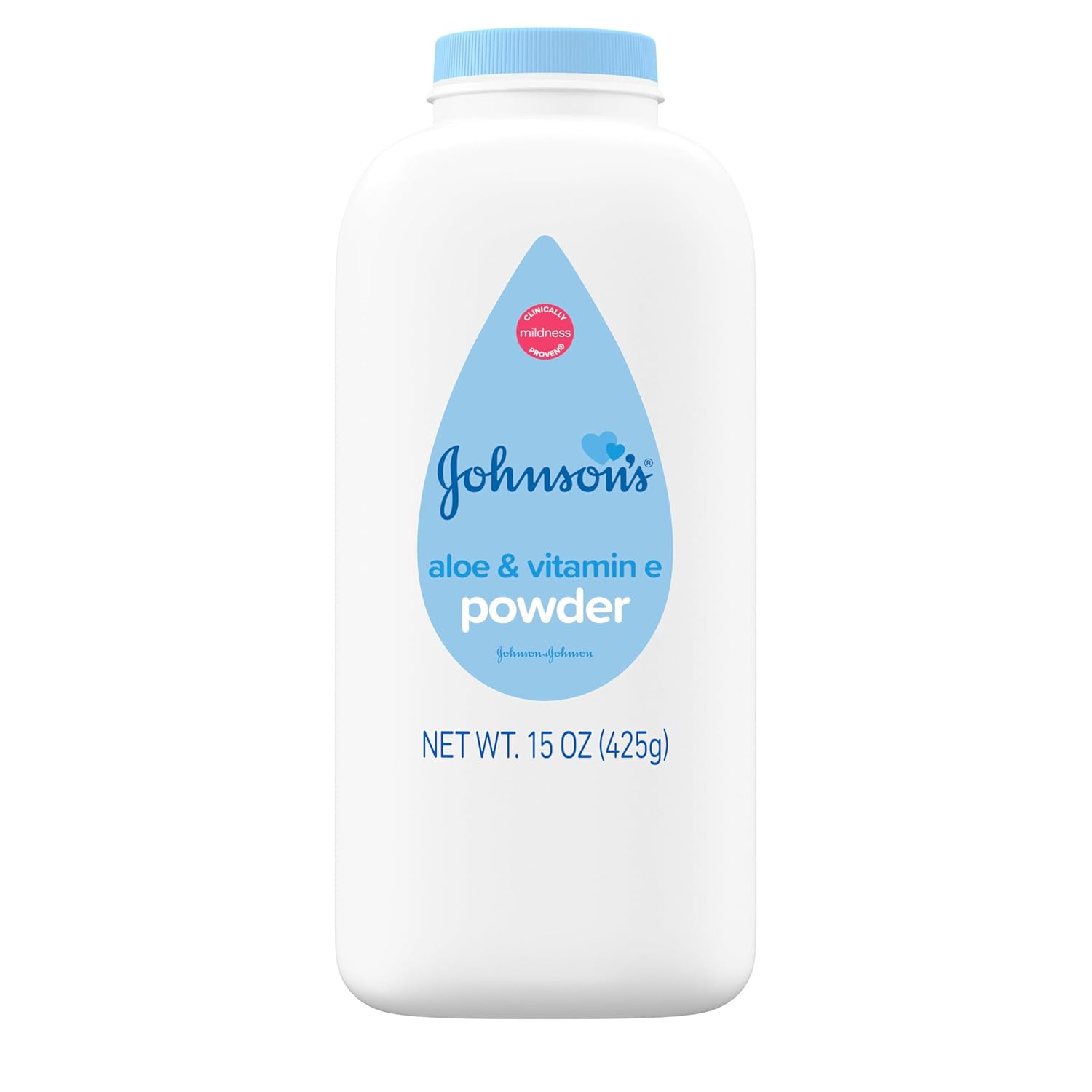
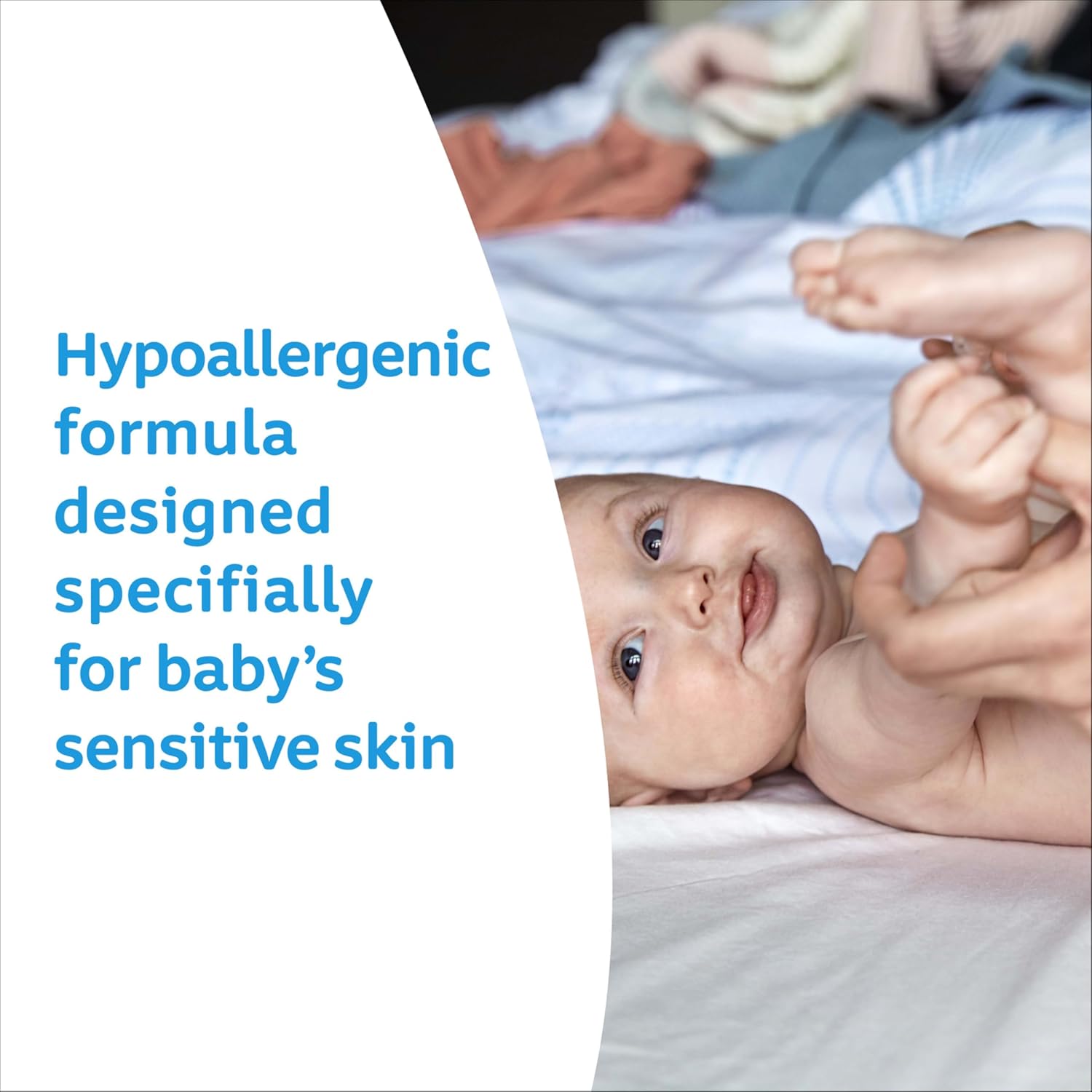
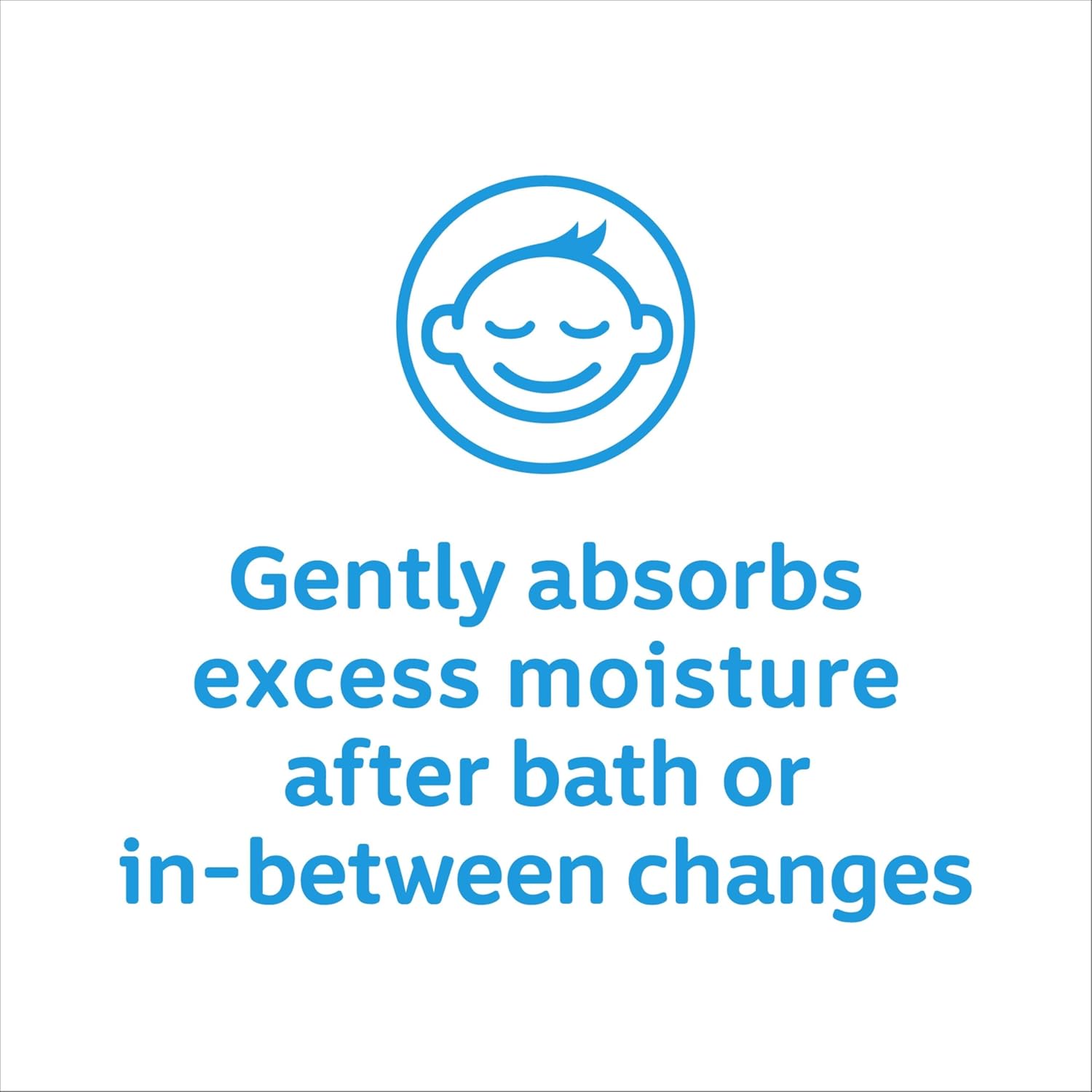
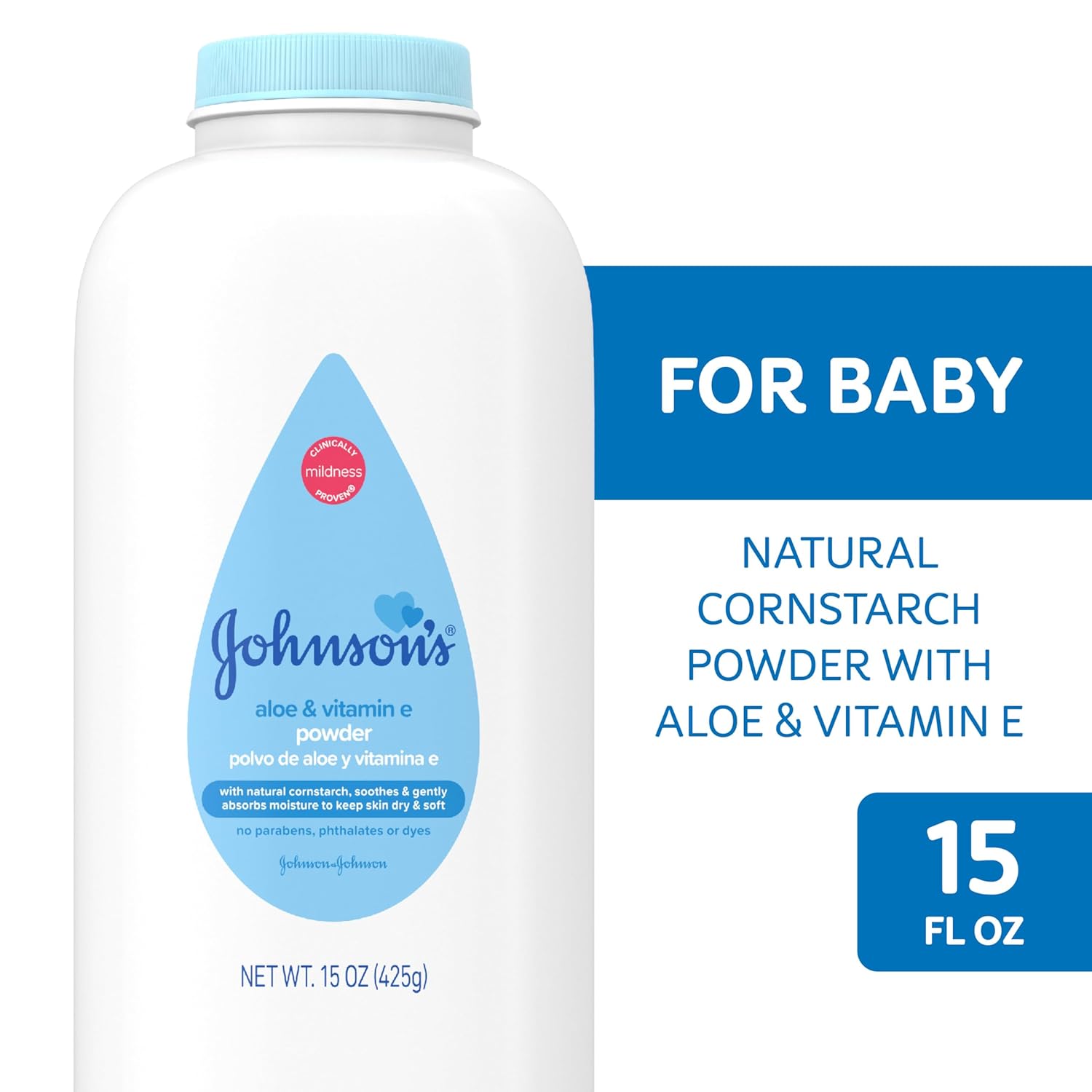
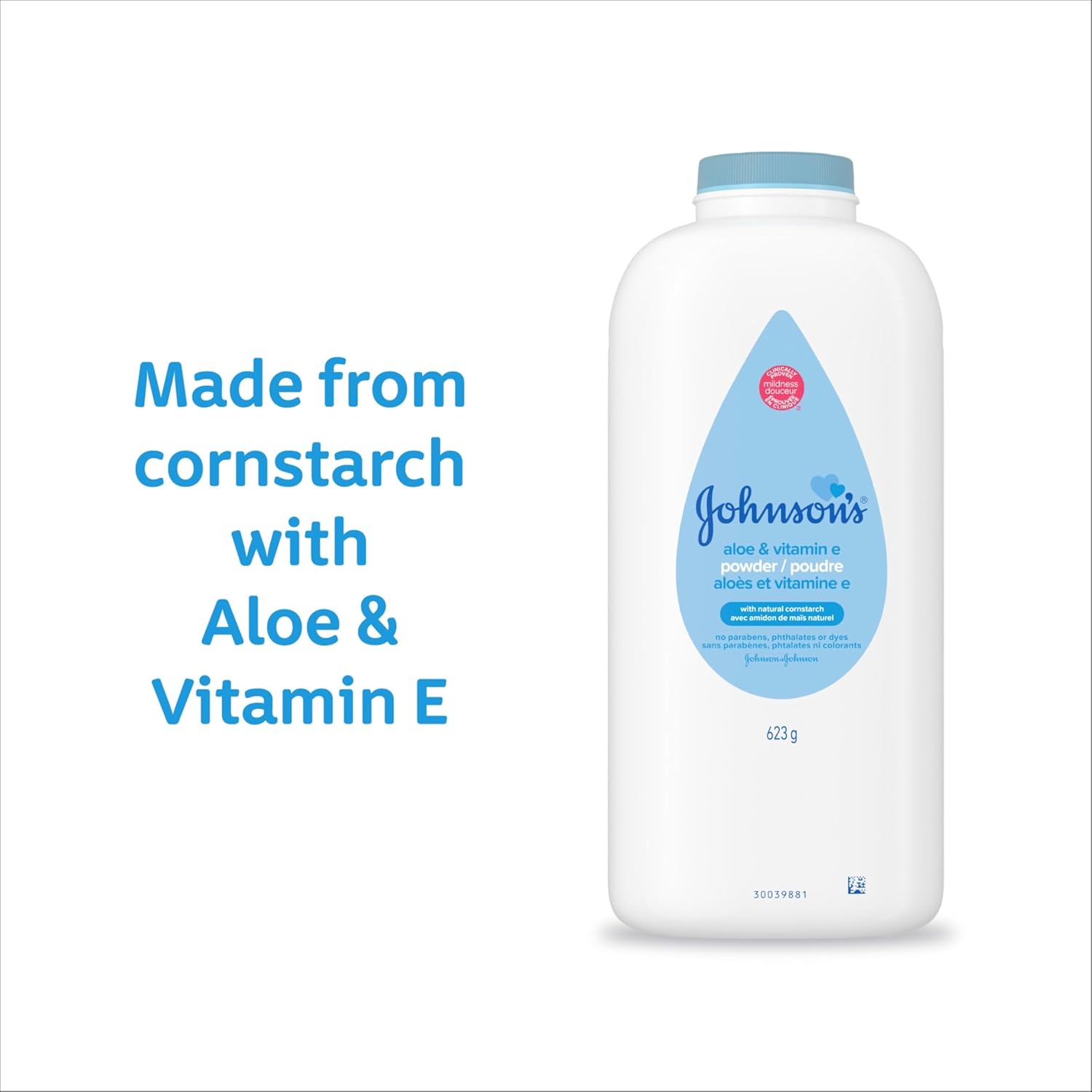


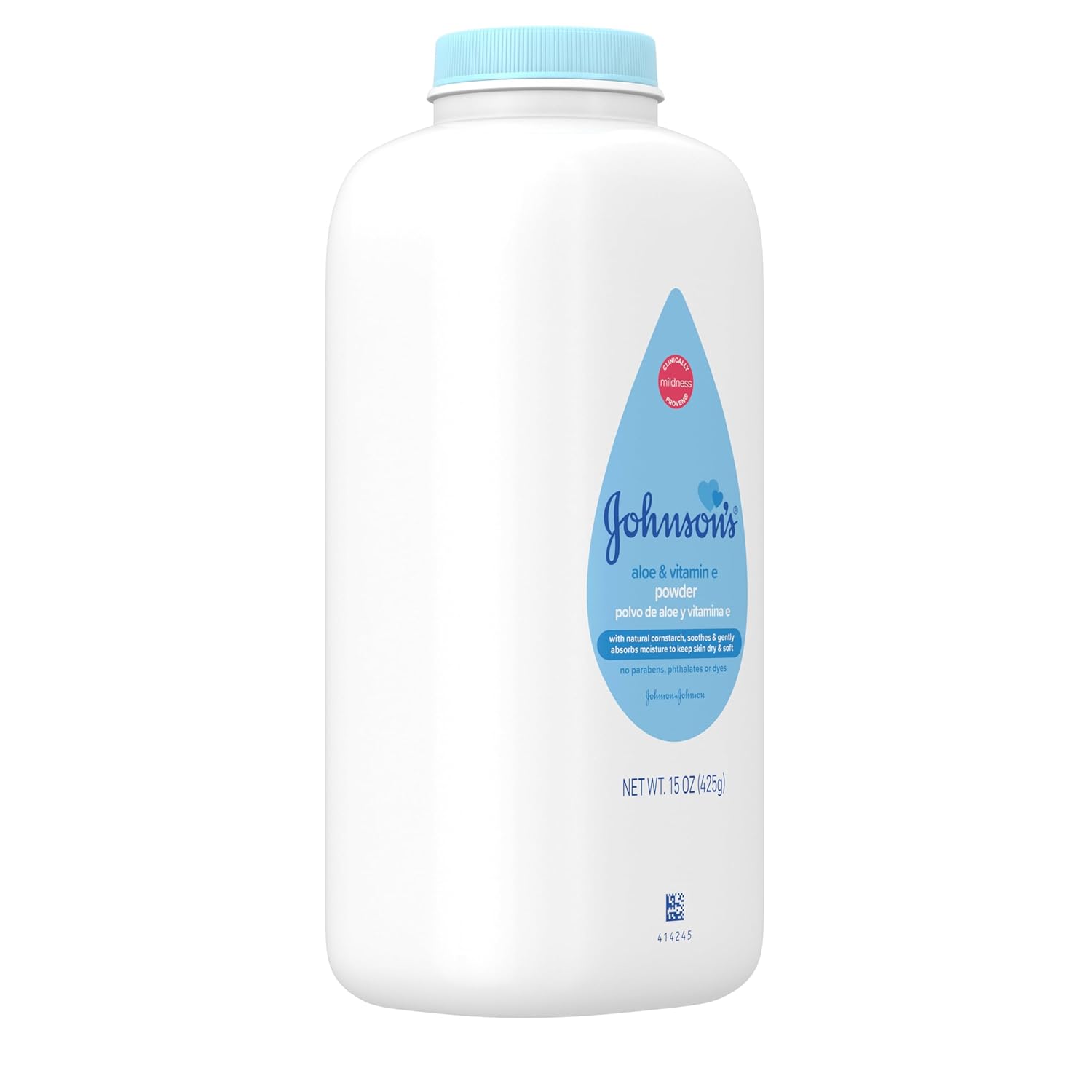
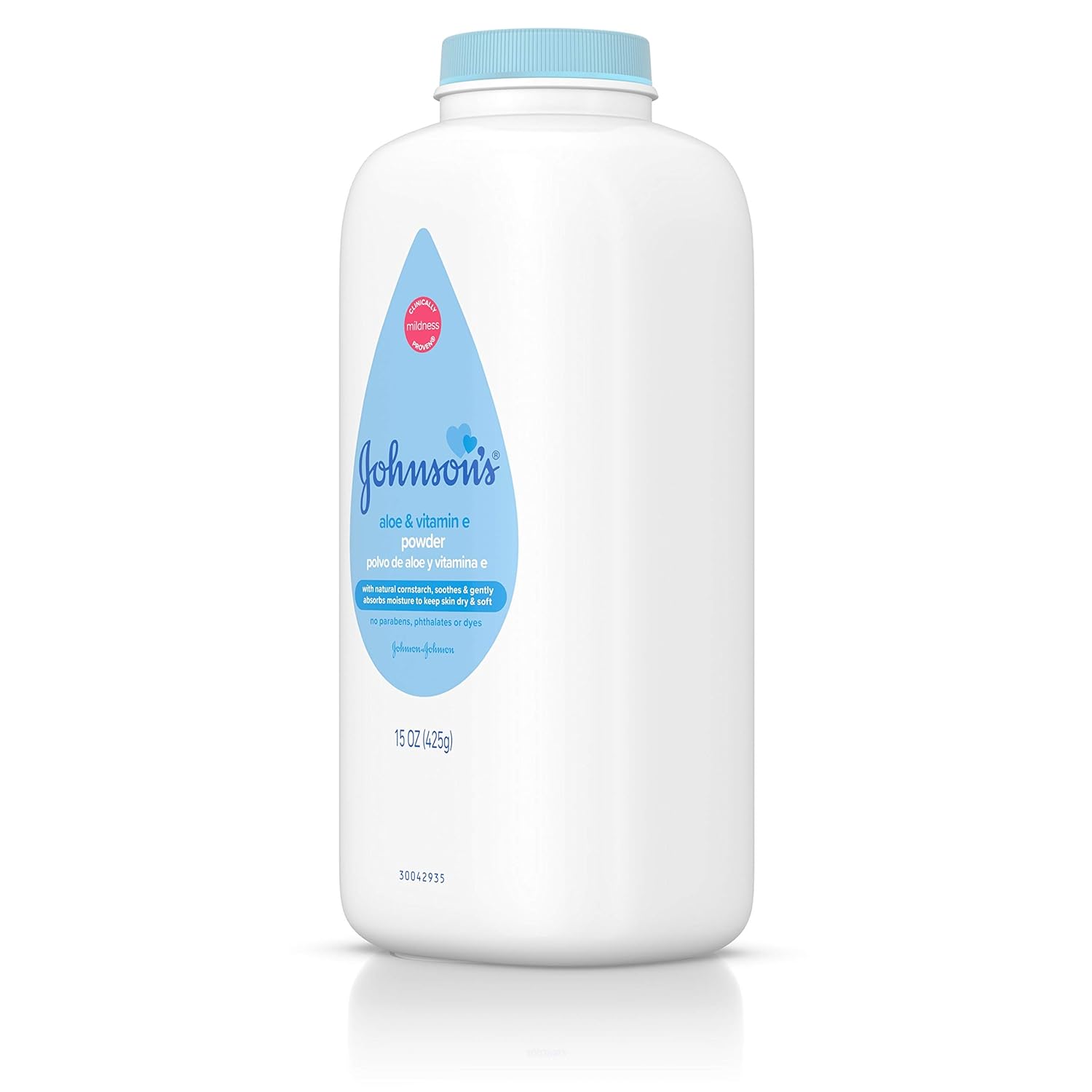
Price: $7.17 - $4.98
(as of Sep 05, 2025 02:01:46 UTC – Details)




